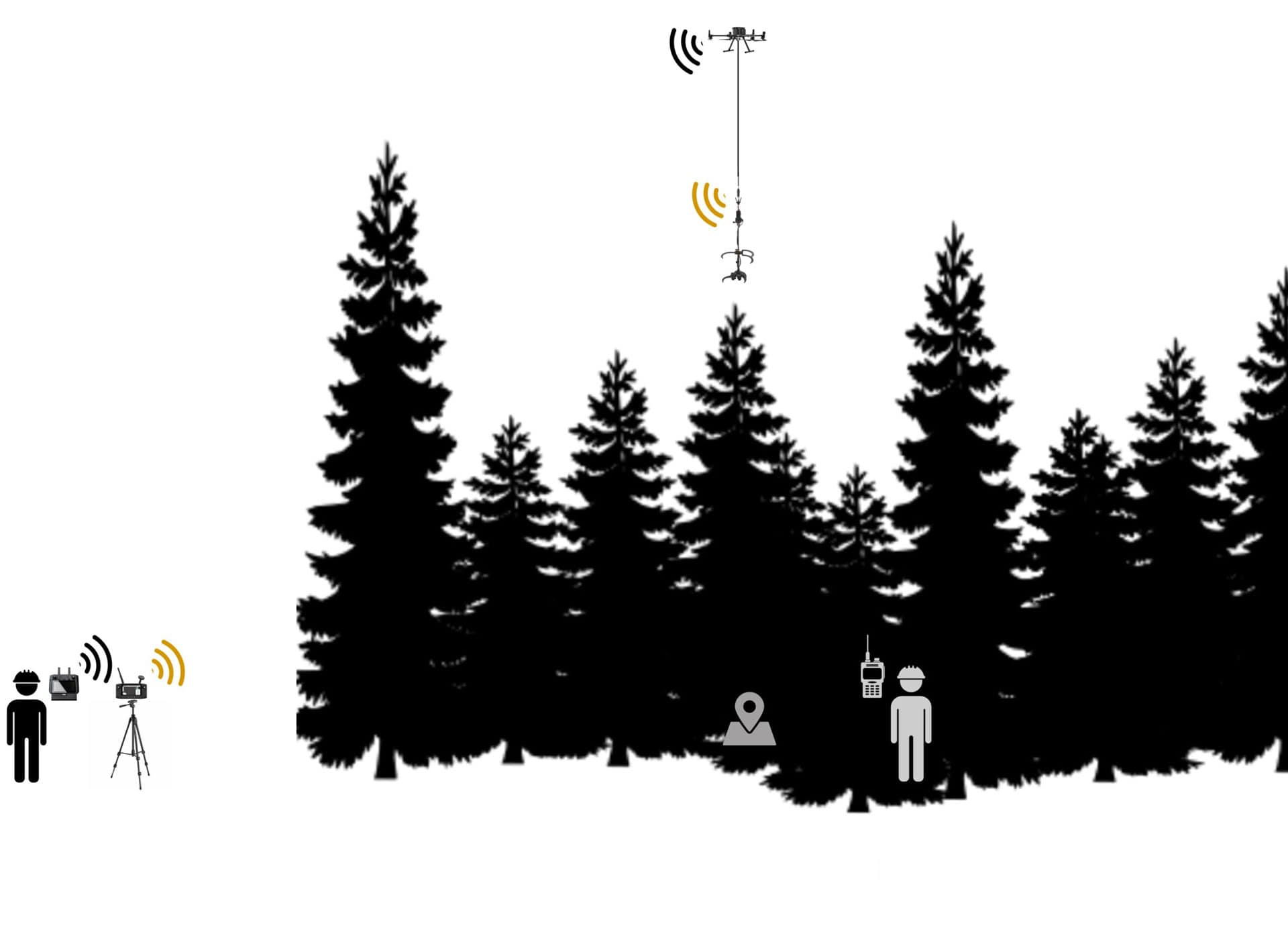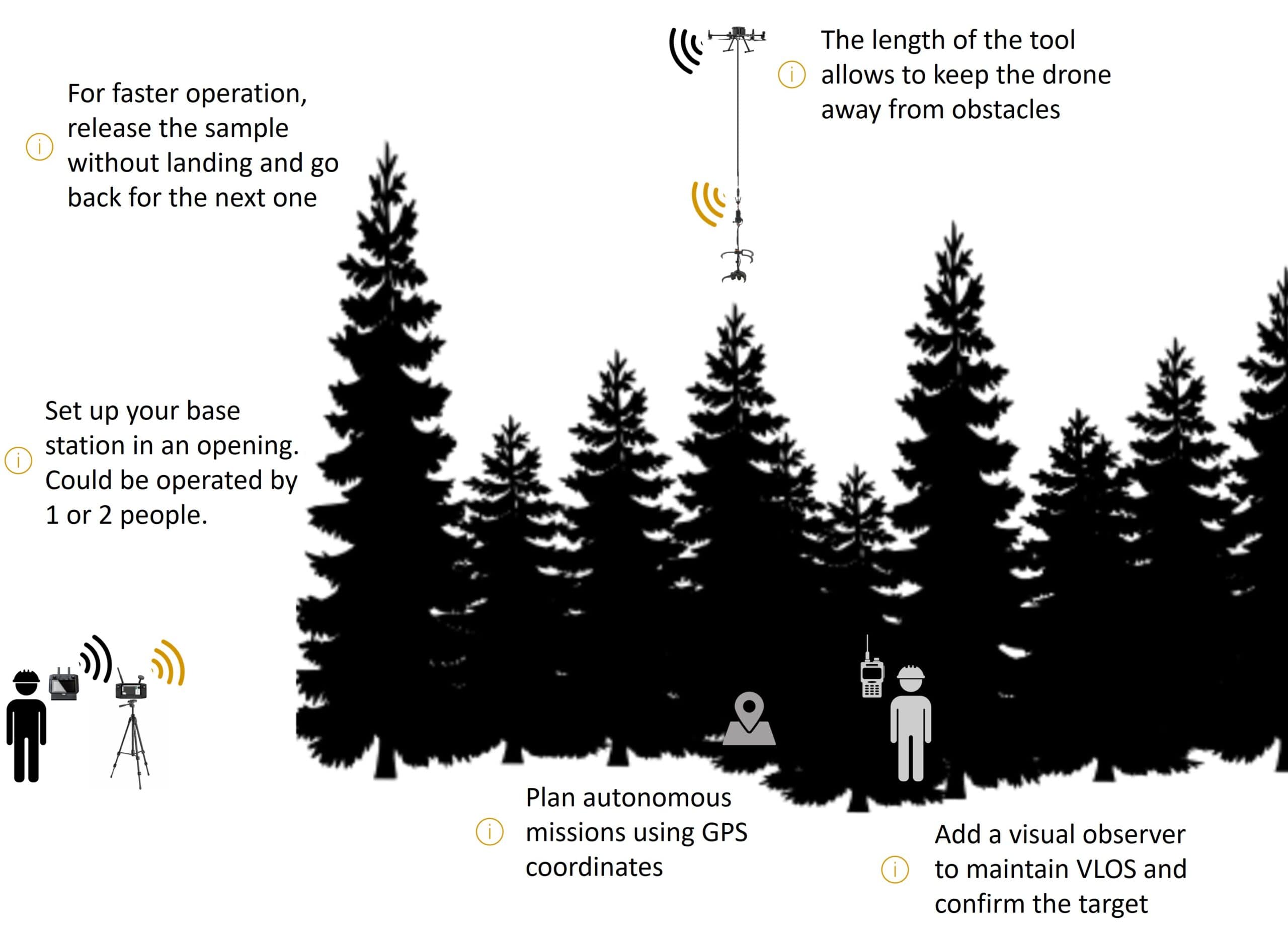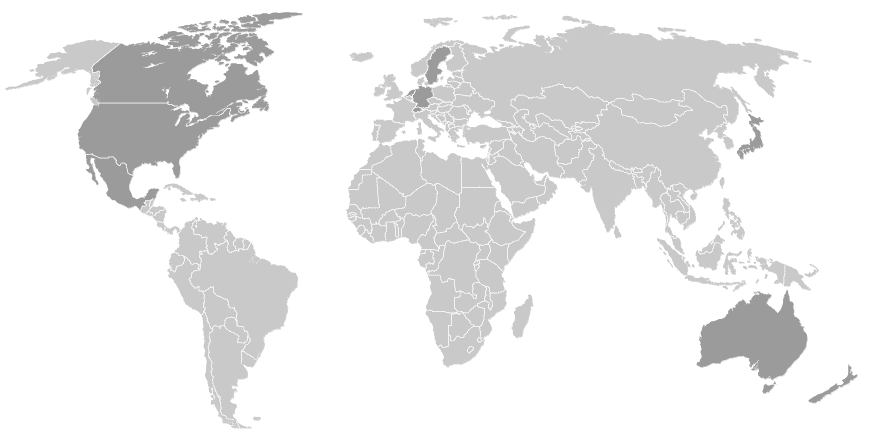One reason why studying the top of trees is essential is to account for the intra-variability of samples at different tree heights. Vegetation sampling methods, such as the National Ecological Observatory Network sampling protocol, often require sun-exposed leaves so it can match the data collected by aerial imagery. Calibrating hyperspectral and multispectral models also requires analyzing sunlit leaves, as does matching data with satellite images. Additionally, foliage analysis, such as determining leaf mass per unit area (LMA) and photosynthesis levels, can be achieved by collecting samples from the top of trees.
However, traditional sampling techniques, such as climbing, firearms, line launchers, and pole pruners, are physically hard, inefficient, and limited in reach. These methods also present significant safety concerns, making them a challenge to implement in certain situations.


